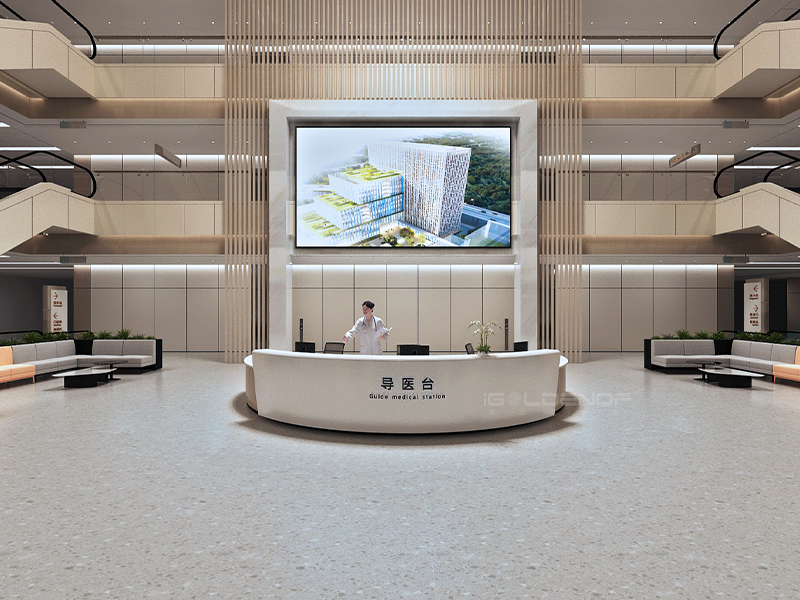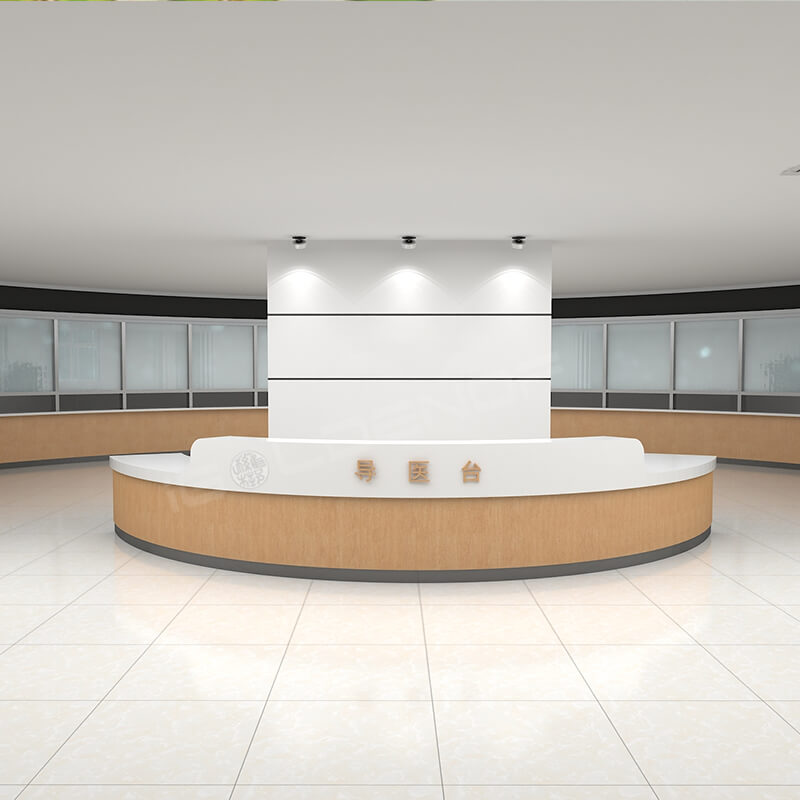As the core service carrier at the entrance of the hospital, the customized design of the aluminum medical guide table can fully adapt to the special needs of the medical scene. Compared with traditional finished products or other materials, it has many significant advantages:
1. Stronger functional adaptability and fits the medical process
Customization can accurately design functional modules according to the actual scene needs of the hospital:
Traffic line optimization: Combined with the service radius of the medical guide table (such as the location of the registration office, pharmacy, and consulting room), customize the table length and height difference partition (such as the consultation area, information filling area, and wheelchair patient service area) to reduce the patient’s round-trip movement and improve the efficiency of medical guidance.
Detailed function integration: It can be embedded in the disinfection equipment placement slot, medical record storage cabinet, electronic screen bracket (display department distribution map, queuing information), call system interface, etc., and even reserve barrier-free service space (such as low-level service window), which fully matches the high-frequency needs of medical guide work.

2. Material properties are highly compatible with the medical environment
The physical properties of aluminum itself, combined with customized processes, can better meet the stringent requirements of medical facilities:
Antibacterial and easy to clean: The aluminum surface is smooth and non-porous. Antibacterial coating can be used during customization to reduce bacterial growth; daily disinfection (such as alcohol and chlorine-containing disinfectants) is not easy to corrode, and it maintains a hygienic state for a long time, meeting hospital infection control standards.
Strong durability: Aluminum has high hardness and impact resistance, and customized welding/splicing processes can avoid gaps. It can withstand high-frequency use (such as patient leaning, item placement) and complex hospital environments (such as humidity changes, collisions), and its service life is much longer than that of wood or ordinary steel furniture.
Lightweight + stability balance: Aluminum has low density, and the customized medical guide table is lighter, which is convenient for adjusting the position according to the department later; at the same time, structural design (such as reinforced base) is used to ensure stability and avoid shaking hazards.
3. Flexible design, integrated into the overall style of the hospital
Appearance customization: The spray color of aluminum can be customized according to the hospital’s VI system (such as logo color, theme style) (such as light blue, beige and other soft tones to relieve patient tension), or through brushing, frosting and other surface treatments, to match the modern simplicity, warmth and other design styles of the hospital area to avoid abruptness.
Precise size adaptation: The spatial layout of the hospital lobby is diverse (such as narrow and long, square, including columns, etc.). Customization can accurately measure the on-site dimensions and design special-shaped structures (such as arc, L-shaped, corner connection), making full use of space while ensuring smooth passages and meeting fire protection and evacuation requirements.

4. Controllable costs, higher long-term cost performance
Configuration on demand to avoid waste: Customization can select functional modules according to actual needs, without paying for redundant functions (such as abandoning unnecessary decorative structures); at the same time, the price of aluminum raw materials is relatively stable, the customization process is mature, and the cost transparency is high.
Low maintenance cost: Aluminum furniture is not easy to damage, and parts (such as drawer slides and door hinges) can be customized as standardized and easy-to-replace accessories, which are convenient for later maintenance and replacement, reducing long-term maintenance costs.
5. Better environmental protection and sustainability
Green and environmentally friendly: Aluminum is a recyclable material, and no harmful volatiles such as formaldehyde are released during the customization process, which meets the hospital’s requirements for environmentally friendly materials and ensures the health of doctors and patients.
Upgradable and reconstructed: If the hospital’s dynamic line is adjusted or the function is upgraded in the later stage, the aluminum medical guide table can be reused by partial disassembly and replacement of parts (such as expanding the table top and replacing the electronic screen module), reducing resource waste, which is in line with the trend of sustainable development of medical places.
In summary, the customization advantage of the aluminum medical guide table is essentially the deep combination of material characteristics, functional requirements, and environmental adaptation through “on-demand design”, which not only improves the practicality and professionalism of the medical guide service, but also takes into account the safety, aesthetics and economy of the medical space, making it an ideal choice in the construction of modern hospitals.
